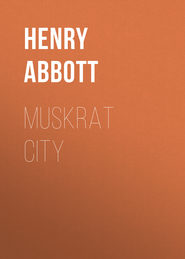По всем вопросам обращайтесь на: info@litportal.ru
(©) 2003-2024.
✖
The Chief Engineer
Настройки чтения
Размер шрифта
Высота строк
Поля
The following spring there came out of our beaver house, the Chief Engineer, his wife, four yearlings and a new family of five babies. The "old man" now went off on his annual exploring trip, but he took with him the four older children, while the mother and the babies remained behind. As usual, the house was deserted during the summer months. We now noted several burrows under the bank at widely separate places along shore. Sometimes the beaver would be seen entering one of these holes and again another.
It is interesting and easy, to study the habits of wild creatures, and to note how uniform are their methods and practices. It is not so easy to determine reasons for their peculiar way of doing things. It is of course permissible to speculate, but one might be expected to furnish proof, when an assertion is made. For example, it has been stated by at least two writers, that beaver desert their homes in summer so that the vermin which infest their huts may die off from starvation during the absence of their fur coated hosts.
My own guess, if I were to hazard one, would be that since a beaver house must generally be placed in an exposed position, its owners find that with the sun beating down on its roof during June, July and August, the poorly ventilated interior becomes too hot for comfort. On the other hand, I have noted that the burrows in which they live in summer, are usually found under some overhanging tree, in a cool spot where the sun never penetrates.
During our wanderings through the woods that summer, Bige and I came upon a family of beavers at Mud Pond. These were doubtless also emigrants from the original Raquette Lake colony. Great improvements were in progress. An abandoned and broken down lumber dam at the outlet, which had not been used for lumber operations for many years, was being rebuilt by the beavers, and the Chief Engineer was on hand assisting and directing operations.
On a subsequent visit, we saw the completed dam which raised the waters of the pond about three feet. An area more than a mile long and a quarter mile wide was now flooded. A swamp at the upper end was entirely covered and afforded water transportation from a large grove of poplar trees, which without the dam could not have been reached. Five years later, on the shores of this pond, the beavers had completely cleared of trees more than ten acres of ground. At this time four beaver houses were observed on the shore and on islands in Mud Pond.
When three years old, the children of the Chief Engineer left the parental homestead, mated with relatives in other colonies and set up house building and house keeping on their own account. Some of them, doubtless, located many miles away, others we know built dams and houses on streams emptying into Cherry Pond.
One summer Bige and I were trout fishing on West Bay Brook. We worked up stream about four miles from its mouth, and encountered seven beaver dams and as many houses. At one of these dams we found the white capped Chief working with some younger beavers. Our guess was, that some of these were his own offspring to whom he was giving instruction in engineering practice.
A year later, on Fishing Brook, twenty miles to the north-east, and fully fifty miles from the original colony on the Raquette tributary, we found several beaver colonies. They also settled on Minnow Brook. On Salmon River, from its mouth to Salmon Pond (which it drains), a distance of six miles, there is now a beaver dam every half mile. At one of these dams, a few years ago, we found the Chief Engineer at work. The dam was placed where the current was swift, and a big rock in mid stream was utilized as a pier, against which the two sections of the dam were braced. Such an adaptation of available means to accomplish a difficult engineering feat is surely something more than merely instinct.
On an exploring trip over the foot hills of Dunwood Mountain, Bige and I came upon a very unusual beaver dam on Little Bear Brook. The brook at this point flowed through a deep ravine. The dam built across the valley measured in length at its top two hundred and ten feet. It was fifteen feet from the bottom of brook to top of dam, and we estimated the width at its base at forty feet. Water was flowing over a spillway three feet wide at one end of the dam. The upper and lower sides of the dam sloped away steeply like the roof of a house, and along the ridge was a row of stones, each about the size of a man's head. We walked across the dam on these stones without wetting our feet, and we wondered how the beavers got them into position. It did not seem possible that such small animals could lift and carry these heavy stones to where they were placed. It was impossible for a human to roll them up over the lower and outer face of the dam, which was a network of interwoven and criss-crossed saplings, sticks and brush. The only other method which appeared to us possible was for the stones to be rolled or pushed up the upper and inner slope of the dam under water to the top. The inner face of the dam was of course plastered over with mud and was relatively smooth.
We cooked our eggs, bacon and tea on the bank at one end of the dam. After we had eaten and drunken and while I was engaged in taking some photographs, we were agreeably surprised to see our old friend, the bald headed Chief Engineer, swimming down the pond toward us. As a signal that we were recognized, he saluted by humping his back, lifting his broad tail and striking the water a resounding slap, thus throwing a fountain of spray high into the air. His presence signified to us that this marvelous piece of engineering was the product of his skill in plan and execution.
We were able to go in a boat past the beaver house on our pond, about a mile up the river. At the head of navigation was a big flat rock, over which the water flowed, making a fall about one foot high, and above this fall were rapids. An old and much used trail started at this flat rock and led up the river; a branch also took one to Wolf Pond and another branch led to Dunwood Mountain. We often used this trail, as also did other visitors at the pond. And doubtless, so did the Indians many years ago.
A pair of young beavers, both of them probably relatives of the Chief Engineer, built a dam across the river on this flat rock. The dam was about two feet high, backing the water up the rapids thirty yards and making a fall of water over the dam three feet high. Above this dam the beavers started building a house, but before the house was completed, high water following three days of rain washed away the dam. The beavers at once rebuilt the dam in the same spot, but within a month the dam had been the second time washed away. The high water of the following spring carried the dam, rebuilt in the fall, off of the flat rock for the third time.
On the smooth flat surface of this rock there was no suitable anchorage for a dam, and the unusual pressure of high and swift flowing water pushed it down stream and scattered the materials of which it was built.
It was a bad dam-site! and this is doubtless what the Chief Engineer told the youngsters; for it was at this period that the Chief took a hand in the game.
The house that had been built above the flat rock was abandoned and was never again occupied.
A pair of beavers which we believed to be the hard luck animals above mentioned, we now found were beginning operations on a new dam about a quarter of a mile down the river, and the Chief Engineer worked with them and seemed to be directing the job. We watched the progress of this enterprise for many days and found it most interesting.
At the spot selected, the river was about a hundred and twenty feet wide and five feet deep in the middle. The current was not very swift and a lot of mud had settled on the gravelly bottom. Saplings and bushy alders, many of them fifteen to twenty feet long, were used for a foundation. They were always placed with the butt ends up stream and stones on the bushy ends held them firmly anchored on the bottom. All sorts of materials were worked into this dam; much of it was carried, dragged or floated long distances. The sticks and brush were interwoven in a very ingenious manner, the chinks were filled with sod, stones and mud. The entire structure was firmly braced by heavy sticks resting against the lower slope of the dam with one end of each stick stuck in the ground at the bottom of the river.
This dam at first was built up to two feet above the normal level of the river and water flowed over the top of the dam; but the river banks were low at this place and water also flowed over the banks – on one side into a slough and on the other side into a swamp.
The second phase of this hydro-engineering feat was now begun. It consisted of wing dams two feet high on top of the river bank and parallel to the stream. These were carried up on the north side of the river a distance of three hundred and fifty feet and on the south side about two hundred feet. The dam across the river was also made two feet higher. The dam now, in the middle of the river, was five feet high under water and four feet above the surface, making it nine feet in the highest part and with the two wings, six hundred and seventy feet long.
We had visited the scene of operations at least twice every day during the building and had casually discussed the probable difficulty in reaching the old trail up the river, but had not considered the matter seriously. One day Bige and I dragged our boat up over the dam and rowed up the river. Above the end of the wing dam the forest was flooded five hundred or more feet on each side of the river, and if we wished to follow the old trail we should have to wade through water at least as far as that; for it was impossible to push the boat through the woods, between the trees and bushes.
It was all very well and very interesting to watch the operations of the beaver, but this was carrying a joke too far. The beavers were now interfering with our business. The beavers are, of course, protected by law, but here were hundreds of fine spruce, hemlock, pine and balsam trees being drowned in our presence. The trees would die; they were valuable; they belonged to the State and we were both of us tax-payers. This thing must be stopped at once.
We rowed back to the dam and spent three hours tearing a hole three feet wide through the middle of it. We watched the water run out through the break and then returned to camp.
The next morning we found the dam had been repaired during the night and the water was flowing over its top as usual. Two guests arrived at our camp that morning. They were interested in the story of the dam and spent all of the afternoon in making another opening to let the water out; but again the beavers had the dam repaired before the following morning. The Doctor had by now settled in his camp at the western end of the pond. He came across with his two husky boys and they broke a hole through the dam for the third time; and the third time the beavers repaired the breach during the night.
Bige's fighting blood was now thoroughly "het up" and he said "I'll fix them pesky beavers." A lot of men were at work building a "tote road" for a lumber camp over the other side of the mountain about three miles from our camp. Bige went over to call on them, and he came back with four sticks of dynamite and some fuse. These we connected and placed on top of the dam. We covered the dynamite with mud, lighted the fuse, jumped into our boat and rowed as fast as possible down toward the pond. When a hundred yards away, the explosion occurred. With a terrific roar that beaver dam was shot toward the sky and toward every point of the compass, and the water above the dam came rushing through a gap twenty feet wide. A later examination proved, that the dam had been torn out clear to the bottom of the river. Our hand-made breaks had extended only to the surface of the water below the dam.
That night a hurry up wireless call went out, and before morning twenty-three beavers were at work rebuilding the dam, with the Chief Engineer in command. We figured that delegations must have come from a colony two miles up the river, probably some from Mud Pond, others from Pine Brook and Raquette River. Certainly, there were not, living on our pond, as many beavers as we saw at work that night. By the next morning the dam had been rebuilt to the water level, and the second morning it was completely restored with water flowing over the top. A curious fact we noted, was, that while both banks of the river were strewn with fragments of the old dam, not a single piece of this tainted and dangerous material was used. New trees and bushes were cut and carried greater distances for the rebuilding.
At this stage of the war, Bige and I surrendered. We were hopelessly outnumbered and outclassed by the beavers. They worked while we were asleep. We now got busy and cut out a new trail around the swamp and the flooded area to connect with the old trail. This makes the walk fully a half mile longer than before the dam was built.
The Chief Engineer had lived at Cherry Pond ten years. He had brought out a new family of from four to seven individuals every spring. All of these had been housed and fed for two or three years, when they were old enough to emigrate and set up in business and housekeeping on their own. During these ten years a large quantity of bark had been consumed and poplar, the favorite food of beaver, had practically all been cut off. Along the shores and on the islands no more was to be found. It was, therefore, necessary to seek new sources of food supply.
Beyond the swamp, to the northeast of the river mouth, there was a grove of poplar trees, covering several acres. It was nearly a half mile to this grove, but not too far for the courage of our Chief, who now set his gang of youngsters at work digging a canal. This canal had an average width of three feet and it was two and a half feet deep. It was made quite crooked through the swamp, winding around and between clumps of alders and larger trees. Smaller trees were dug up and roots which crossed the path of the canal were cut off as clean as if chopped with an axe.
Water in the canal through the swamp maintained practically the level of the pond. There was a gradual rise of ground beyond the swamp and here a series of dams or locks were built. Each dam raised the level of water from two to three feet. There were thirteen of these levels varying in length from fifty, to two hundred and fifty feet. Water from a spring brook was diverted into the canal and flowed over each dam. The beavers towed their lumber through this canal and dragged it over the several dams, each of which seemed to be especially constructed to facilitate this operation. The length of this canal we estimated to be twenty-five hundred feet.
Beavers appear to prefer the bark of smaller trees, but they do not hesitate to cut down a large one when necessary. In such case they carry away the branches only. A poplar tree eighteen inches in diameter was cut on the shore of our pond and felled into the water. The branches that remained above the surface were cut off and carried to the storage pile. Those that were under water were left and were cut off under the ice during the following winter.
Beavers are generally peaceable. They have many admirable traits. Individuals of one colony will assist those of another in strenuous operations much as pioneer humans helped each other in building log cabins, in barn raisings, etc. Many tales are told. One, of a family whose house had been destroyed, being taken into another's house and the two families living together all winter. Another story relates how a mother beaver was killed, when another immediately adopted the five orphans and brought them up with her own children. We have recorded above, instances where the Chief Engineer was contributing his remarkable skill and experience toward solving the problems of his friends in widely separated parts of the forest. And we believe he did not insist upon union rules in regard to wage, hours of labor, or minimum output.
Our observations justify the belief that at least some beavers have a sense of humor. We mention two incidents in support of the theory. One day on the big lake, near the hotel, I saw two girls about twelve years of age, in a canoe. These girls were chasing a beaver. The beaver was swimming on the surface and he was more than half a mile from his house. He could easily have outdistanced the canoe and got away from it, but he chose to swim slowly and allow the canoe to approach until the girls might have touched him with a paddle, when he would hump himself, slap the water with his tail, thus throwing showers of spray over the girls, while he dived under the canoe and presently came to the surface in some new and unexpected position. The girls, of course, with screams and excited shouts frantically swung the canoe into position and started the chase over again; while the beaver loafed along until they caught up. This game of tag, played by the girls and the beaver I watched for twenty minutes or more and each time the girls came near enough to the animal he managed to throw water on them. I feel certain that he enjoyed the game quite as much as the two girls, and while I did not hear the beaver laugh, I thought I saw a grin on his face.
The cottage where our family live during the summer, stands on a bank about thirty feet above the water and fifty feet from the shore of the lake. A number of shade trees have been planted on the grounds about the house. Among these were two poplar trees which we had carefully nursed for five years, and they were growing fine. One of them was directly in front of the cottage and twenty feet from the steps. It was six inches in diameter. The other tree was four inches in diameter and about thirty feet from one side of the house.
A mile up the lake was a large beaver house. The shores near this house on both sides of the lake, were lined with poplar trees and an island near by was covered with them. One night a beaver from this colony came down the lake and cut down the poplar tree in front of our door, cut it into suitable lengths and towed it back up the lake to his house. In the morning all that was left where my tree stood, was a stump and some chips. The following night he came again and cut the other tree. He must have made several trips to tow back to his storage pile the lumber he cut at my front door.
I have devoted some time to speculating as to the motive that might conceivably actuate a perfectly sane and intelligent beaver to haul his lumber more than a mile, when in doing so he would have to pass by hundreds of other equally good trees, many of them within a few rods of his house. The only reasonable answer I have been able to secure to this conundrum is that the beaver probably thought it would be a good joke on me; and I have a mental picture of him laughing in his sleeve as he dragged the logs down the bank in front of my door while I slept.
Early in October, a few years ago, Bige and I were entertaining three guests at our Cherry Pond camp. For two days we had been hunting with indifferent success. Awakening quite early one morning, I took my rifle and leaving the other members of the party audibly sleeping on the balsam, tiptoed out of camp and down the trail. A log-road paralleled the shore of the pond and I wandered down this road, hoping to get an early morning shot at a deer. It was still quite dark and I found that the sights on my gun were still invisible in the dim light, so I sat on a log and waited for the first yellow light to appear over East Inlet Mountain. Then, continuing my silent, stalking way, when opposite the mouth of the river, I heard curious and unusual sounds. Peering through the bushes across the slough I saw a black bear. He was on top of the beaver house and with his claws was tearing out sticks, brush and sod and throwing them in every direction. The bear was very busy and with great energy and determination he was proceeding to dig out the Chief Engineer. Of course I knew that the Chief was in no personal danger, as he had a perfectly safe way of retreat open, under water. But I could not stand idly by and see his roof torn off: so I took careful aim and fired. The bear tumbled down the steep slope of the beaver house and I had visions of bear steak, etc., etc. But he immediately got on his feet and wallowed through the slough to the shore. As he crossed the log-road headed toward the woods I fired again and the second time the bear fell. It did not take him long to recover his balance and start at high speed up the steep hillside. About ten rods from where I stood, the bear came into an opening in the bushes which had once been a skid-way for logs; here he stopped, put his fore paws up on a log and looked back at me. "Now," I said, to the trees and bushes, "he's coming back to argue with me." Before he started, however, the third shot cut a bunch of hair off of his shoulder and he resumed his journey up the mountain and I went back to camp.
The racket made by three shots in the early morning had suddenly interrupted the camp chorus, and I was greeted with the inquiry, "Where's the deer?"
"That deer," said I, "is a bear, and he's big as a horse. I left him up in the woods. We'll go and get him after breakfast."
Bige allowed that "if it really was a bear, he wasn't hurt much. You couldn't kill a bear with that pop-gun. (I was using a Winchester 30). Why, a bear's hide is thicker than sole-leather and this time of year he has an armor-plate of fat under it, six inches thick. You might as well try to shoot a hole through a feather pillow. If you are going to hunt bear, take an elephant-gun – a 45-90."
After breakfast, we all started out on the trail of the bear. We found blood spots in the log-road. We also measured a foot print in a soft place in the path. It was twelve inches in diameter. Broken bushes, blood spots on fallen trees and on leaves marked his route up the steep slope. Half way up the mountain on a big ledge of rocks, covered with moss, the bear had been lying down. A pool of blood marked the spot. Also, numerous tufts of moss torn from the rock and saturated with blood were scattered about. Apparently the bear had pulled up handfuls of the soft moss and used it in the same manner that a surgeon uses lint.
Bige suggested, "This is a first aid station for bears; but if you should tell anyone what you have seen here, you will be put in the class of Nature Fakirs."
We followed the bear's trail from the mossy rock up to the top of the mountain and had started down the other side when it began to rain. In a few minutes the rain had washed away the red stains and we lost the trail and returned to camp. But that bear is going yet. Also, he is carrying with him three bullets that belong to me. Some day, somewhere in the woods, I expect to meet him again, when I shall take those bullets away from him.
It is now seventeen years since we first met the Chief Engineer. He still retains the monopoly of his trade mark. Within our knowledge, no other beaver has appeared with a white spot on his head. But the Chief shows his age. His brown coat of fur looks faded and grey, and the white spot is less conspicuous. The Chief was a member of the first colony installed for the purpose of restocking the northern forests; and he has contributed his share, both to increasing the inhabitants and to rebuilding beaver industries. Every season a new family of four to seven beavers have been sent out from his home to start other families, and so they have multiplied in a sort of geometrical progression until now they cover many hundreds of square miles of forest land and water. Early in 1920 the Conservation Commissioner of the State of New York estimated that there were more than twenty thousand beavers in the Adirondack region. My guess is that this estimate is much too low.
One day last summer, Bige and I saw the Chief Engineer dive and enter a tunnel leading to his house. We silently paddled up close to the house and listened. Presently we heard a murmur of beaver conversation inside. "Gosh!" said Bige, "the old Chief is giving instructions to the kid beavers. He's telling 'em how to handle the job they have to do tonight."
END OF THE CHIEF ENGINEER










